4 Questioning ideas I tested this term
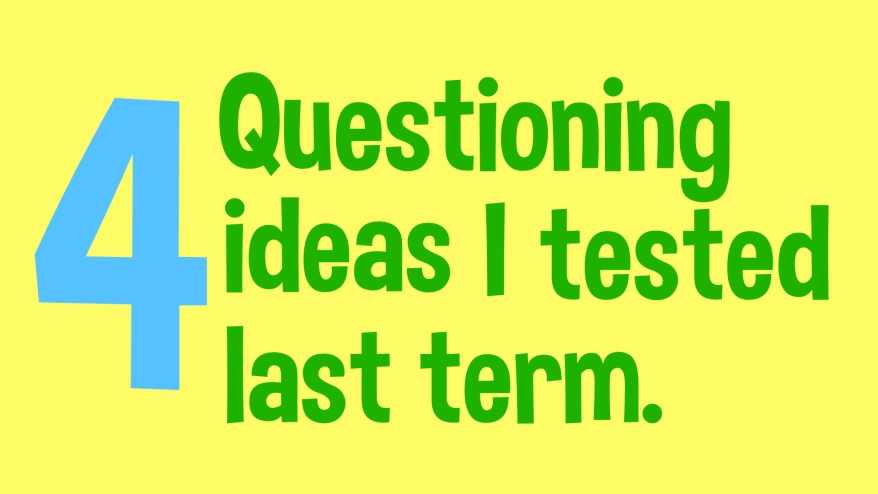
Last 1/2 term I focused on improving my own classroom questioning and sharing this with the NQTs I work in my team.
Not that I thought my questioning was poor, it’s just that questioning is something I believe is best revisited as often as possible to fine tune.
Questioning is something I believe is best revisited as often as possible to fine tune.
I thought I would share the top 4 questioning activities that I used over the last 6 weeks for anyone who’s interested in refreshing their own practice.
No hands up questioning (or ‘cold calling’):
What is it?
Does what it says on the tin. You ask questions but do not allow students to put up their hands. I ask the question out loud to the whole class before I choose a student to answer it.
Why do this?
By not allowing learners to put up their hands I was in complete control of who I challenged with questions. Students could be targeted based on the level of challenge I felt they needed or the need I had to engage some of my students.
Further reading: Check out Teach Like a Champion and the blog post here.
Pyramid Questioning:
What is it?
I start by posing a question to one of my lower ability learners and then build on the initial question while I work up to my most able. The trick is not stopping there…I then made a conscious decision to return the now slightly more challenging question(s) to less able learners after that.
Why do this?
It allowed me to challenge lower ability learners first, which I found ‘switched them (and others) on’. I would then take their answers and carefully question more able learners to build on that answer. Then, instead of ending on what I might think is the best or fullest answer I was going to get I pause, and then worked my way back through other less able learners. The aim was to allow the second set of learners to give fuller answers than those who went at the very beginning. It really helped me to measure the understanding across a larger number of learners than if I had ‘stopped at the top’.
Starter for ten questions:
What is it?
This was a good way to use questions at the very start of my lessons. I created a set of questions based on a topic already studied. Simply put 10 questions on the board and asked learns to write the number of each question alongside the answer. Tip – Make each question more challenging than the one before.
Why do this?
This challenge started my lessons off in a number of good ways; It telegraphed my expectations about learning to my students reminding them that it begins the moment they arrive in the room. It also challenged my learners to recall learning from a previous lesson. This is vital to develop strong knowledge recall skills in learners.
Pose, Pause, Pounce, Bounce
What is it?
A classic! Pose a question to the whole class…pause for a few moments (the longer the better, get comfortable with that silence) then ‘pounce’ by choosing a student to answer the question, don’t stop here, bounce the question on to another student challenging them to add too, build upon or even challenge the answer previously given. I’ll be honest this one had fallen out of my routine and I’m so glad I’ve brought it back!
Why do this?
It is an excellent way to stretch and challenge learners. Research shows that this method engages learners and enables them to both strengthen recall ability as well as increase their own knowledge wealth. I’ll be continuing this next term for sure!
Research and more on PPPP here and here.
Thanks for reading, click any image to share this post with colleagues.

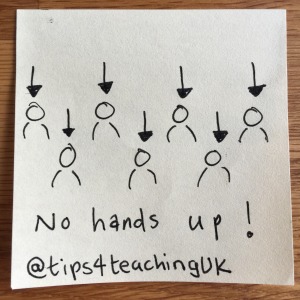
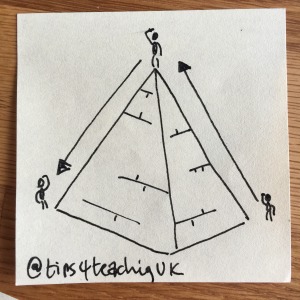

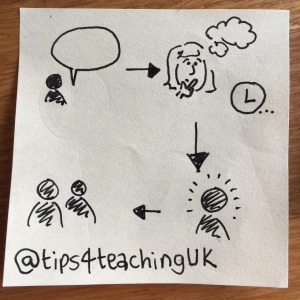
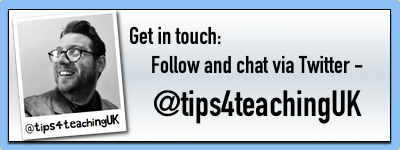
1 Comment »